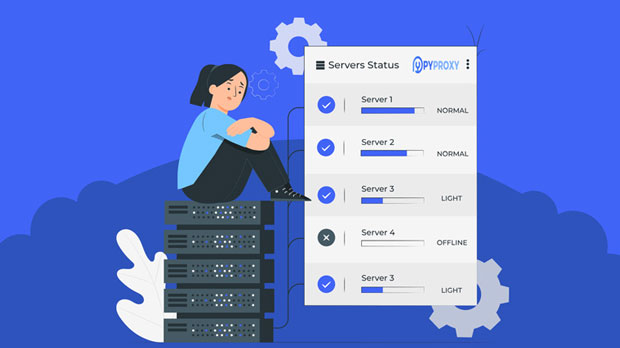When using sock s5 proxies, a common challenge is ensuring a reliable and stable connection, especially when nodes can become overloaded or blocked. One feature that simplifies this process is automatic node switching, which allows users to seamlessly switch to another proxy node when the current one becomes slow or fails. This feature enhances security and performance, especially for users who require consistent internet access for activities like online gaming, web scraping, or anonymous browsing. In this article, we will explore some of the Socks5 tools that support automatic node switching, their functionalities, and how this feature can improve the user experience. Understanding Socks5 ProxiesSocks5 proxies are a popular type of proxy server that allows clients to route their internet traffic through an intermediary server. Unlike HTTP proxies, which only handle web traffic, Socks5 proxies can support various types of internet traffic, such as web browsing, emails, torrents, and gaming. They work by rerouting data from a client to a server, effectively masking the user's original IP address and allowing for increased anonymity.However, over time, the effectiveness of a socks5 proxy can diminish. Servers may become slow, experience connection drops, or even get blocked due to heavy usage or geographical restrictions. This is where automatic node switching becomes crucial.What is Automatic Node Switching?Automatic node switching is a feature that enables a user’s connection to automatically switch to a different socks5 proxy server (or node) if the current one becomes slow, unstable, or unavailable. The process is seamless and typically occurs without the user needing to manually intervene. This ensures that the user’s online activities continue without interruption, even if one of the proxy servers faces issues.For example, if you're using a Socks5 proxy for secure browsing, and the server you're connected to becomes unresponsive or slow, automatic node switching will automatically reroute your traffic to a faster, more stable proxy node. This enhances both security and convenience for users who rely on proxy services for a range of internet-based activities.Socks5 Tools That Support Automatic Node SwitchingSeveral Socks5 proxy tools come with built-in support for automatic node switching, each offering various features to meet different needs. Below are some of the most commonly used tools that provide this functionality:1. Proxy Switcher ProProxy Switcher Pro is a popular proxy management tool that supports automatic node switching for Socks5 proxies. It allows users to set up multiple proxy servers and switch between them automatically. This tool is particularly useful for individuals who need to manage a large number of proxy servers or use proxies from different geographical locations. Proxy Switcher Pro offers advanced features like proxy rotation, real-time status monitoring, and the ability to test the speed and availability of each node before switching.2. ShadowsocksShadowsocks is an open-source Socks5 proxy tool widely used for circumventing internet censorship. It allows users to securely route their internet traffic through a proxy server, providing enhanced anonymity. Shadowsocks supports automatic node switching by integrating with third-party tools like V2Ray or Clash. These integrations enable users to create a list of proxy servers, and the system will automatically switch to the best-performing server based on real-time conditions, such as speed and latency. This ensures a seamless user experience, particularly for users in regions with fluctuating internet connectivity.3. V2RayV2Ray is a versatile proxy tool that supports multiple protocols, including Socks5. It is designed to help users bypass censorship and enhance their online privacy. V2Ray offers a feature called “automatic switching,” which allows users to configure a list of proxy nodes and set up automatic switching based on conditions like server load or latency. V2Ray uses advanced algorithms to choose the most optimal server based on performance, ensuring that users experience minimal downtime or disruptions in their connection.4. ClashClash is another open-source tool that supports Socks5 proxies and offers automatic node switching. It allows users to define rules for proxy selection and can automatically switch nodes based on conditions like server performance or geographical location. Clash’s user-friendly interface and robust rule-setting features make it ideal for advanced users who need granular control over their proxy settings. It also supports multi-platform use, including Windows, macOS, and Linux, making it a versatile choice for many users.5. SurfsharkSurfshark is a popular VPN service that also supports Socks5 proxies. It provides automatic node switching as part of its proxy service, allowing users to switch between different proxy servers for enhanced security and performance. Surfshark’s automatic switching feature ensures that users always have access to the fastest and most reliable server available, making it a great choice for users who value privacy and speed.How Automatic Node Switching Enhances User ExperienceThe automatic node switching feature provides several key benefits for users of Socks5 proxies, including:1. Improved Stability and ReliabilityBy automatically switching to a different node when the current one fails or becomes slow, users can enjoy a more stable and reliable internet connection. This is especially important for activities that require uninterrupted internet access, such as streaming, gaming, or browsing.2. Enhanced Privacy and SecurityUsing a proxy service helps enhance online privacy by masking the user's IP address. However, if a proxy node becomes compromised or blocked, it could potentially expose the user's identity. Automatic node switching mitigates this risk by switching to a different, secure server when needed, ensuring that the user's online activities remain private and protected.3. Optimized Speed and PerformanceAutomatic node switching allows users to connect to the fastest available proxy server based on real-time conditions. This ensures that users experience optimal speed and performance, even if one node becomes slow or unavailable.4. Increased ConvenienceAutomatic node switching eliminates the need for users to manually change proxy servers when encountering problems. This is particularly useful for users who rely on proxies for long periods, as it reduces the amount of time spent managing proxy connections.For users who depend on Socks5 proxies for security, anonymity, and uninterrupted internet access, automatic node switching is a valuable feature. Tools like Proxy Switcher Pro, Shadowsocks, V2Ray, Clash, and Surfshark provide automatic node switching, ensuring that users can always connect to the most reliable and performant proxy servers. This feature enhances the overall user experience by improving stability, security, speed, and convenience, making it an essential tool for anyone who relies on proxy services for online activities.
May 09, 2025
![arrow]()




























































